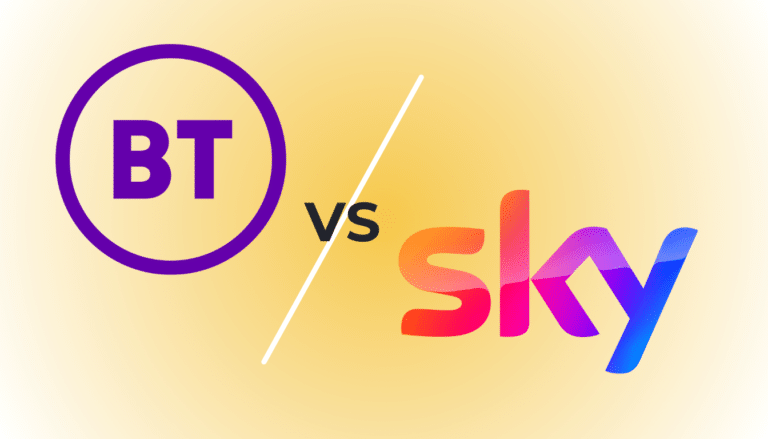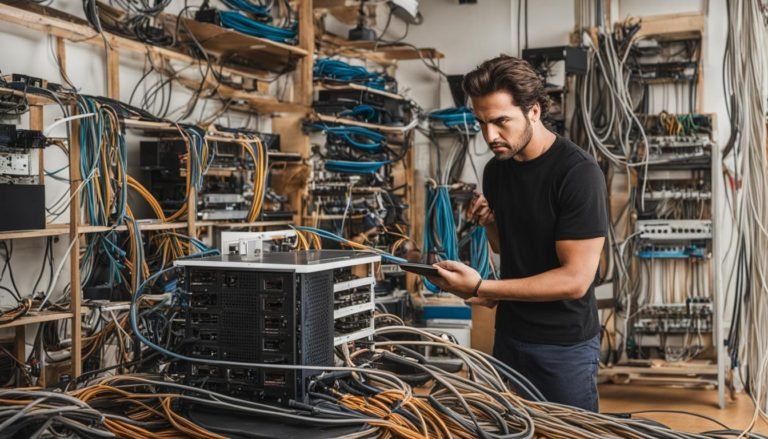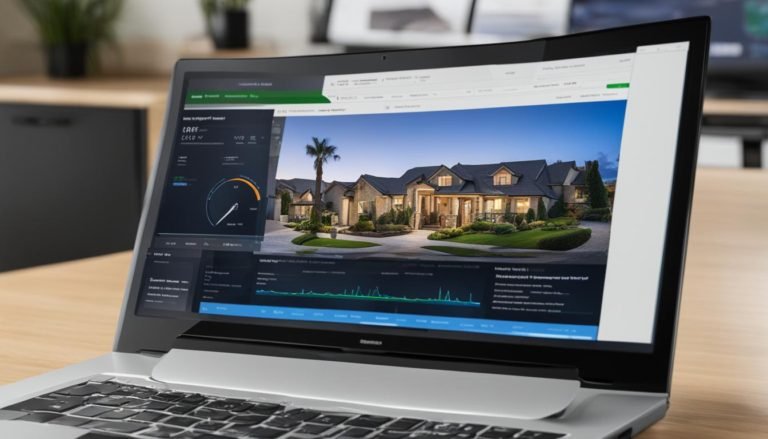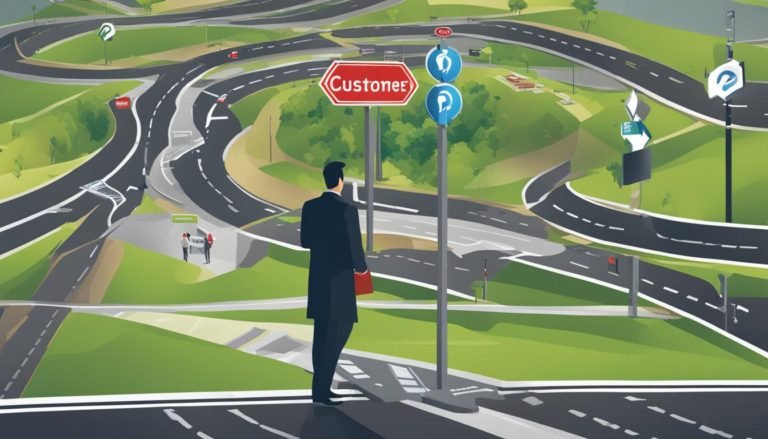Introduction
In the digital age, broadband speed is a term that most of us are familiar with. It’s the factor that determines whether our Netflix show streams smoothly, our important email gets sent promptly, or our online game plays without lag. But have you ever stopped to consider the environmental impact of your broadband speed? It might surprise you to learn that the speed of your internet connection can have a significant effect on your carbon footprint.
The internet, while an incredible resource, is not without its environmental cost. Every web search, every streamed song, every uploaded photo contributes to the energy demand of the vast network of servers and infrastructure that make up the World Wide Web. And with higher broadband speeds enabling us to consume more data than ever before, this environmental impact is only increasing.
In this blog post, we’ll delve into the relationship between broadband speed and carbon emissions, helping you understand how your online habits contribute to climate change. We’ll also explore how making informed decisions about your broadband usage can not only improve your internet experience but also help reduce your carbon footprint. After all, every step towards a more sustainable future counts.
What is Broadband Speed?
Broadband speed is a term that refers to the rate at which data is transferred over your internet connection. It’s typically measured in megabits per second (Mbps), and it determines how quickly you can download and upload data from the internet.
There are two types of broadband speed that you should be aware of:
Download Speed: This is the speed at which data is transferred from the internet to your device. It affects how quickly you can download files, load web pages, stream videos, and more. A higher download speed means you can do these things more quickly and efficiently.
Upload Speed: This is the speed at which data is transferred from your device to the internet. It’s crucial for activities like uploading files, video conferencing, and online gaming. A higher upload speed allows you to perform these tasks more smoothly and without interruption.
Several factors can affect your broadband speed, including the type of connection you have (e.g., fibre optic, DSL, satellite), the quality of your hardware, the distance from your internet provider’s central office, and even the time of day.
Understanding your broadband speed is crucial because it directly impacts your online experience. If your broadband speed is too slow, you might experience buffering when streaming videos, lag during online gaming, or slow load times for web pages. On the other hand, if your speed is faster than you need, you might be paying for more than necessary.
In the next section, we’ll explore how these speeds and your internet usage contribute to your carbon footprint.

The Carbon Footprint of the Internet
The internet, while an indispensable part of our lives, is not as invisible to our environment as it seems. Every digital activity we engage in – from sending an email to streaming a movie – consumes energy and contributes to our carbon footprint.
The carbon footprint of the internet comes from the energy used to power the data centres, servers, routers, and other infrastructure that keep the internet running. Data centres, in particular, are significant energy consumers. They require electricity not only to power the servers that store and process data but also to cool the facilities and prevent the servers from overheating.
Moreover, the energy consumption of the internet extends to our devices. Computers, smartphones, tablets, and other devices all require power to connect to the internet and perform tasks. The more data-intensive the task, the more energy the device consumes. For instance, according to a study by Carbon Brief, it examines the environmental impact of streaming video content on the popular platform Netflix. The study aims to estimate the carbon footprint associated with the energy consumption of streaming video.
The researchers analyse the energy usage and associated carbon emissions throughout the entire life cycle of streaming video, including content delivery networks (CDNs), data centres, and end-user devices. They consider factors such as the energy efficiency of different devices, the energy mix used for data centres, and the duration and quality of streaming.
The study finds that streaming video on Netflix has a carbon footprint that varies depending on several factors. On average, streaming an hour of video on Netflix is estimated to result in emissions of approximately 0.4-0.6 kg of carbon dioxide equivalent (CO2e). However, this estimate can vary significantly based on factors such as the device used, video quality, and energy mix of the region where the streaming occurs.
The researchers suggest several strategies to reduce the carbon footprint of streaming video. These include optimising the energy efficiency of data centres, encouraging users to watch videos at lower resolutions, promoting energy-efficient devices, and increasing the share of renewable energy in the electricity mix.
Overall, the study emphasises the need for awareness and action to mitigate the environmental impact of streaming video, highlighting the importance of adopting energy-efficient practices and transitioning to cleaner sources of energy in order to reduce carbon emissions associated with this popular form of entertainment.
As our demand for data grows, driven by higher broadband speeds and an increasing number of internet-connected devices, so too does the carbon footprint of the internet. This growing environmental impact makes it more important than ever to understand how our online habits contribute to carbon emissions and what we can do to reduce them. In the following sections, we’ll delve deeper into the relationship between broadband speed and carbon footprint, and explore how making informed choices about our internet usage can help us tread more lightly on our planet.
The Connection Between Broadband Speed and Carbon Footprint
The link between broadband speed and carbon footprint might not be immediately apparent, but it becomes clearer when we consider our data consumption habits. Broadband speed affects how much data we can and do consume, and this data consumption translates directly into energy use and carbon emissions.
Faster broadband speeds enable us to download and upload data more quickly, which can lead to increased data consumption. For example, with a high-speed internet connection, you might be more likely to stream movies in high definition or 4K, play data-intensive online games, or use cloud-based applications—all of which consume significant amounts of data.
Moreover, as broadband speeds increase, so does the capacity for more devices to be connected and used simultaneously without experiencing lag or buffering. This means that households with high-speed broadband might have multiple devices streaming videos, playing games, or conducting video calls at the same time, leading to a higher overall data consumption.
All this data consumption requires energy. From the servers in data centres that process and transmit the data, to the routers and modems that receive it, to the devices that display it—all these components consume electricity. And while individual actions like streaming a video or downloading a file might not consume much energy on their own, the cumulative energy use of billions of internet users around the world is substantial.
Therefore, while having a fast broadband connection can enhance our online experience, it also has the potential to increase our carbon footprint. This doesn’t mean we should all switch to slower broadband, but it does highlight the importance of using our internet connection responsibly and choosing broadband packages that align with our actual data needs.
This article from Openreach discusses the environmental benefits of Full Fibre broadband with the main points being:
- Openreach is working to provide Full Fibre broadband across the country, which they believe will transform the way people live and work, leading to a more connected, productive, and competitive economy.
- Full Fibre is not only faster, more reliable, and future-proof, but it also offers environmental benefits.
- A report by the Centre for Economics and Business Research (Cebr) found that a Full Fibre connection could enable more people to work from home, potentially saving 300 million commuting trips each year. This would result in three billion fewer kilometres travelled by car and a reduction of more than 360,000 tonnes of CO2 emissions.
- A study by the Telework Research Network suggests that if half the UK workforce worked from home twice a week, it would reduce UK transportation emissions by 4%, equivalent to taking 2.5 million cars off the road.
- Cloud computing, enabled by Full Fibre, can also contribute to energy efficiency. While data centres can consume significant power, some are built underground to keep temperatures low. Moreover, Full Fibre allows data to be backed up securely off-site, reducing reliance on costly, energy-consuming servers.
- Research by the Carbon Disclosure Project found that moving to cloud-based networks could cut CO2 emissions in half by 2020 for large companies in the UK and France, resulting in annual energy savings of £1.2 billion in the UK.
- Full Fibre can enable other carbon-reducing services and applications, such as telemedicine, which a study in Sweden found could achieve a 40–70 times reduction in carbon emissions by replacing physical visits.
- The article concludes by acknowledging the significant carbon footprint of IT but suggests that switching to Full Fibre broadband could be a small change with a big impact.

How to Choose the Right Broadband Speed
Choosing the right broadband speed is a balance between ensuring a smooth, efficient online experience and minimising your environmental impact. Here’s how you can make an informed decision:
Assess Your Internet Usage: The first step is to understand your internet habits. How many devices are connected to your internet at the same time? What activities do you usually do online? If you’re mostly browsing the web, checking emails, and streaming music, you might not need a very high-speed connection. However, if you’re frequently downloading large files, streaming 4K videos, or playing online games, a faster connection might be necessary.
Consider the Number of Users: The number of people using the internet in your household can also affect the speed you need. More users often mean more devices and more diverse internet activities, which can require a higher speed to accommodate everyone’s needs without lag or buffering.
Think About Peak Usage Times: There might be certain times of the day when your internet usage spikes, such as in the evenings when everyone is home. During these peak times, you might need a faster connection to handle the increased demand.
Choose a Greener Broadband Provider: Some broadband providers are committed to reducing their environmental impact by using renewable energy to power their operations, improving energy efficiency, and offsetting their carbon emissions. Virgin Media, BT, Zen, Vodafone , Sky to name a few have pledged to be net zero by the very latest of 2031. To switch to one of these providers, ensure to use Switchity comparison tool as we will also contribute by planting three trees.
Use Data Efficiently: Regardless of the speed of your broadband, using data efficiently can help reduce your environmental impact. This could mean streaming in standard definition instead of HD or 4K when possible, turning off automatic video play in social media apps, and disconnecting devices from the internet when they’re not in use.
Remember, the goal is not to sacrifice your internet experience for the sake of reducing your carbon footprint, but to make conscious, informed decisions that allow you to enjoy the benefits of a fast, reliable internet connection while also being mindful of your environmental impact. In the next section, we’ll discuss how green broadband providers can help you achieve this balance.
The Role of Broadband Providers for the Environment
As we become more aware of the environmental impact of our internet usage, the role of broadband providers becomes increasingly important. Providers that are committed to reducing the carbon footprint of their operations and offering services that align with the values of environmentally conscious consumers.
Green broadband providers take various steps to minimise their environmental impact:
Using Renewable Energy: Some providers power their data centres with renewable energy sources like wind, solar, or hydroelectric power. This reduces their reliance on fossil fuels and lowers their carbon emissions.
Improving Energy Efficiency: Green providers also focus on improving the energy efficiency of their operations. This could involve using more efficient servers, optimising their network infrastructure, or implementing advanced cooling techniques in their data centres.
Offsetting Carbon Emissions: Some providers offset their carbon emissions by investing in environmental projects that reduce greenhouse gases. This could include tree planting initiatives, renewable energy projects, or carbon capture technologies.
Promoting Sustainable Practices: Green providers often encourage their customers to adopt more sustainable internet habits. This could involve providing tips for reducing data consumption, offering eco-friendly broadband packages, or incentivising customers to switch to paperless billing.
By choosing a broadband provider committed to net zero, you can ensure that your internet usage contributes to a more sustainable future. At Switchity, we’re committed to helping you find the best broadband deals and making the switch as easy as possible. Plus, for every switch made through our platform, we plant three trees, further contributing to environmental conservation. In the next section, we’ll delve deeper into how Switchity helps reduce your carbon footprint.

How Switchity Helps in Reducing Carbon Footprint
Switchity is more than just a comparison site for broadband and mobile deals. We’re a platform committed to making a positive impact on the environment. Here’s how we contribute to reducing your carbon footprint:
Planting Trees: For every switch made through our platform, we pledge to plant three trees. Trees absorb carbon dioxide, one of the main greenhouse gases, helping to mitigate the effects of climate change. This means that every time you switch providers through Switchity, you’re not just potentially saving money—you’re also contributing to a greener planet.
Educating Consumers: We believe that education is key to promoting more sustainable internet habits. That’s why we provide resources and tips to help you understand your internet usage and its environmental impact. By making informed decisions about your broadband and mobile deals, you can reduce your carbon footprint without compromising on your internet experience.
Supporting Sustainable Practices: We encourage all our users to adopt sustainable practices, such as using energy-efficient devices, reducing unnecessary data consumption, and recycling old devices responsibly.
By choosing Switchity, you’re choosing a platform that cares about the environment as much as you do. We’re here to help you find the best broadband and mobile deals while also making a positive impact on our planet.
Our Conclusion
Understanding the relationship between broadband speeds and carbon footprint is crucial in our increasingly digital world. As we’ve explored in this post, faster broadband speeds can lead to increased data consumption, which in turn contributes to higher energy use and carbon emissions. However, this doesn’t mean we should compromise on our internet experience. Instead, it highlights the importance of making informed, conscious decisions about our broadband usage.
Choosing the right broadband speed for your needs, adopting efficient data usage habits, and opting for green broadband providers are all steps you can take to reduce your internet’s carbon footprint. At Switchity, we’re committed to helping you make these choices easier and more rewarding. With our comparison service and our tree planting initiative, you can find the best broadband deals while also contributing to a greener planet.
In the end, every action counts. By understanding the environmental impact of our online habits and making changes where we can, we can all contribute to a more sustainable future. After all, the internet is a powerful tool for connection and knowledge—it’s up to us to ensure it’s also a tool for positive environmental change.
Next Steps In Switching Provider
Now that you understand the connection between broadband speeds and carbon footprint, it’s time to take action. At Switchity, we’re here to help you make informed decisions about your broadband and mobile deals, all while contributing to a greener planet.
Start by assessing your current broadband speed and usage. Do they align? Could you benefit from a different package? Use our comparison tool to explore the best broadband deals that suit your needs and environmental values.
Remember, every switch made through Switchity contributes to our tree planting initiative. So, you’re not just improving your internet experience—you’re also making a tangible difference to our environment.
Join us in making the internet a tool for positive environmental change. Start comparing today, save money, and contribute to a greener future. Because at Switchity, we believe in better deals and a better planet.











